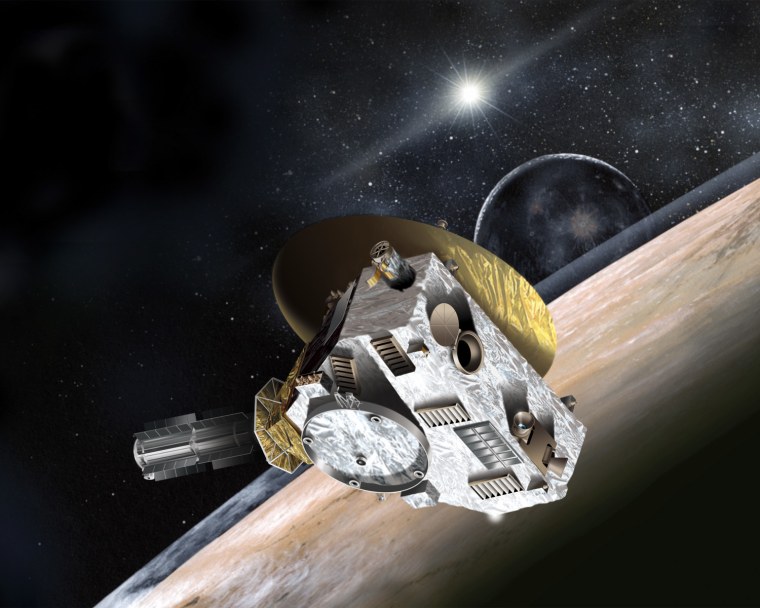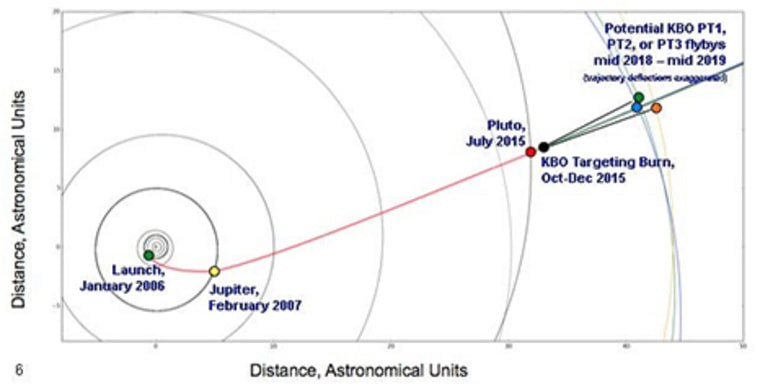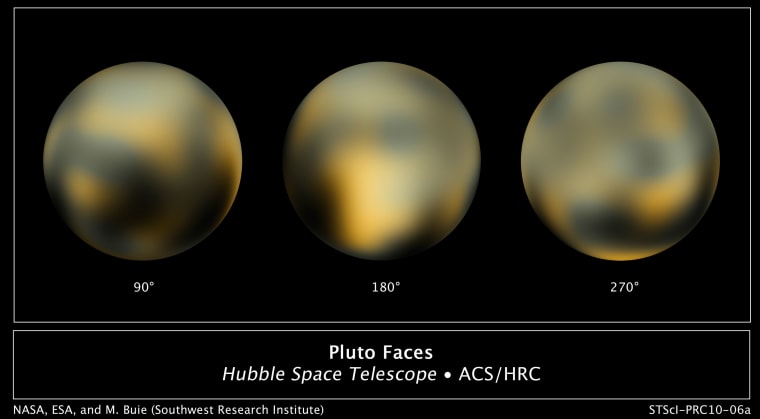
NASA's New Horizons spacecraft is now less than 100 days from its rendezvous with Pluto. Launched in early 2006, New Horizons has been making its way to the outskirts of our Solar System for the past nine years. This July, it will fly within 7,750 miles of Pluto.

Christened the "fastest spacecraft that ever launched," New Horizons is the first spacecraft sent on a direct solar-escape trajectory at over 37,000 miles per hour. New Horizons stopped by Jupiter briefly in 2007 for a quick gravity assist (shaving three years off its travel time) before entering a seven-year cruise phase. This past December, NASA woke the spacecraft up to begin preparations for the upcoming encounter with Pluto.
At the high speeds the spacecraft is traveling (it covers the distance between New York and Los Angeles every four minutes!), tiny micrometeoroids pose a real threat to the mission. Scientists have essentially wrapped the spacecraft in kevlar. Micrometeoroids are a danger for all space missions, but New Horizons is headed to the Kuiper Belt, a region of our Solar System thought to have a higher debris content (not unlike like the Asteroid Belt). Should the spacecraft's sensors detect dangerous levels of debris, it can try reorienting itself so that its large dish antenna can be used as a shield. Here's hoping it won't come to that.

The next big milestone to look out for is May 5, 2015, when the cameras on the spacecraft will be able to officially take higher resolutions of Pluto than the Hubble Space Telescope. I'm very eager to see the how the images that follow improve upon this Hubble image from 2010. You can follow the countdown to Pluto on New Horizon's website and on Twitter. For more insight into what we hope to learn from this summer's encounter, I recommend watching Emily Lakdawalla's Planetary Society blog.
While you wait for the action in July, you can help the New Horizon's team name the features detected on Pluto and its largest moon, Charon. They will use the winning names in their proposal to the International Astronomical Union.
And now for some geek that doesn't require the seasons to change:
- Get to know the Asian unicorn, aka the saola.
- There are only two animals on Earth that have been seen from space: elephants and whales.
- Scientists aren't sure why avocados are still around when their primary consumers are long extinct.
- The longest way to sail around the world without ever hitting land.
- The neuroscience responsible for Game of Thrones' Hordor's speech affliction.
- Google Maps is headed for inner space, i.e., the human body.
- High school students in Connecticut want to declare titanium the official state element.
- In the battle of science versus the most famous art forger, the art forger is winning.
- What happens to patients when the company that makes their robot implants goes bankrupt? [longread]
- Test engineers shoot model airplanes with lightening to better understand how to keep air travel safe in thunderstorms. [VIDEO]
- How to spot the Hubble Space Telescope from your backyard.
Keep on geeking!
@Summer_Ash, In-house Astrophysicist